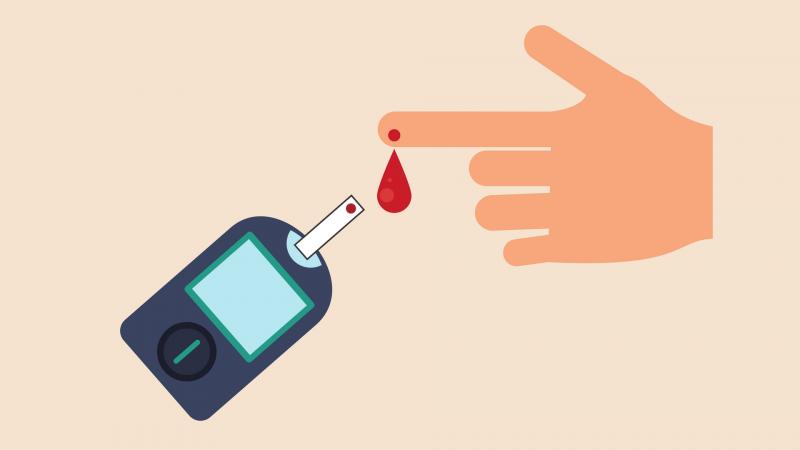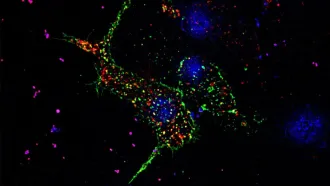
Diabetes is a leading cause of death in the world, with over 1.6 million deaths in 2017 resulting from the disease according to the World Health Organisation. A vast majority, about 90%, of the diabetes cases found in the world is of type 2 diabetes, also called ‘adult onset diabetes’.
As we gear up to observe another World Diabetes Day, on Nov 14th 2017, the Research Matters team caught up with Prof. Milind Watve, Professor at the Indian Institute of Science Education and Research (IISER), Pune. Prof. Watve works in Evolution of behavior, physiology and health. He studies the evolutionary origins of type 2 diabetes. Read more about his recent article.
Current understanding shows that type 2 diabetes patients are resistant to insulin, the hormone that signals the body to metabolise glucose in the blood. Insulin resistance leads to high amounts of glucose in the blood, which, if not managed properly, leads to other complications like kidney, nerve and eye problems and even death.
In a detailed interview, Prof. Watve describes how the paradigms in our understanding of the disease are changing and challenges the currently held views that glucose and insulin are the central molecules to the diabetes story.
Research Matters (RM): What are the changes in our understanding of Type II diabetes over the last two decades?
Prof. Milind Watve (MW): I envision a paradigm shift in our understanding of diabetes in the next two decades. The core of type 2 diabetes is on a shaky ground due to emerging findings that point to anomalies in prevalent theories on the cause and mechanism of diabetes.
Prevalent understanding is that obesity is one of the causes of insulin resistance, which leads the pancreas to compensate by secreting increasing amounts of insulin. Ultimately, this compensation fails and the amount of blood sugar rises, leading to complications such as damage to the kidneys, retina and nerves. However, the correlation between obesity and insulin resistance is weak. Also, the fact that the body secretes increasing amounts of insulin to compensate insulin resistance is now being questioned. In fact, an article on this topic in the journal Diabetes questioned, “Have we got it all wrong?”
Similarly, studies show that if insulin production is suppressed when insulin resistance is present, it does not lead to increased blood sugar. Conversely, genetic intervention to increase insulin does not decrease blood sugar. Therefore the notion that insulin regulates fasting blood sugar is itself under question.
RM: Could you explain in detail some of the other path breaking findings that makes one think “have we got it all wrong” with respect to diabetes?
MW: Another finding is that knockouts, or gene based inactivation, of the insulin receptor on the cell surface that recognizes insulin in the blood, do not develop high blood sugar. If the insulin receptor is knocked out in the liver, it leads to increase in blood sugar, but only temporarily.
In addition, normalizing sugar cannot avoid the complications of diabetes. Results of two clinical trials show that when blood sugar levels are normalized, mortality increases. Thus, the body of evidence shows that we may have to give up the old theory and look for alternatives. As Geoffery Gill termed it in 1991, “absolute proof that good glycaemic control can retard or prevent the development of complications has not been obtained, but the assumption is accepted by most diabetologists and is almost an article of faith in the current approach to achieve the best diabetic control.” Thus, the classical theory is increasingly being questioned.
RM: If so, why are sugar and insulin been the primary focus of attention for so long?
MW: This comes from the burden of history – glucose and insulin were among the early discoveries in the field of diabetology. The early success of insulin in bringing down sugar levels in type 1 diabetes contributed to it. However, we now have more information. Other changes that we see in diabetes patients may not be the secondary change. There is a need to drift away from glucose and insulin, and examine what really is at the center of the diabetes.
RM: With the current understanding of diabetes, what exactly is causing diabetes?
MW: Now, we are proposing that brain and behavior (based on pathway information that exists) may be at the heart of the diabetes problem. However, more research is needed. Behavioral deficiency disorder is like dietary deficiency. Human beings evolved for stone age behaviors, such as hunting, gathering and a nomadic lifestyle. Today, physical activity is deficient, but it is not the only deficiency.
Physical aggression, adventure and risk taking behavior (which would be normal in the stone age lifestyle) releases growth factors, hormones, neuropeptides, and brain monoamines such as dopamine. Release of growth factors in injury and aggression is implicated in wound healing. In a sedentary life, as is led today, not enough growth factors are released, leading to abnormal blood vessel development. For example, abnormal angiogenesis is seen in kidney, retina and brain. These are the primary changes. More evidence has accumulated, but has not come to the clinical level. However, researchers are aware.
In today’s lifestyle, unlike the stone ages, people are not exposed to minor injuries like pricks, bruises or insect bites, which stimulate a type of immune cells called macrophage to migrate to the site of injury. In the absence of injury, macrophages continue to circulate in the blood, leading to altered distribution of immune cells causing inflammatory tendency.
RM: Insulin therapy continues to be the prevalent treatment for diabetes so far. What other factors would you consider important to combat diabetes, now that we know more than ever about the disease?
MW: The early success of insulin washed out alternate modes of thinking. A large amount of finance is involved in insulin and diabetes drugs. While a lot of knowledge is accumulated at the research level, it has not translated to clinical practice, as there is a lack of motivation to change. Further, it does not help that for doctors, a major source of updates is through pharma companies.
The emphasis must be on physical fitness than simply sugar levels. If physical fitness is good, there is lower chance of developing complications. There are simple fitness tests such as the ‘sit and rise’ tests which can help us predict the risk of a cardiovascular event in the next few years. You have voluntary control on fitness in all angles. For example, one must be vigilant not just about fat, but also other markers like the fitness of the heart and respiratory system, muscle strength, balance and rapid nerve muscle coordination.
[Dr Watve, in association with a hospital in Pune, is developing a physical fitness test, which can give a fitness score based on an age related standard. This is a first of its kind test, where people can be advised exercise and lifestyle based on their fitness score.]
RM: The current theory is widely held, and quite old. How do you think the scientific community will warm up to this change?
MW: Reluctance to give up accepted theories is well known in the field of science. Here is a paradigm shift, described by the American philosopher Thomas Kuhn, which is a fundamental change in the basis of our understanding of any scientific discipline. This is an opportunity to examine the revolution in the scientific understanding of diabetes, while it happens.






